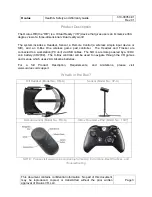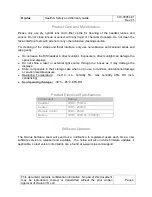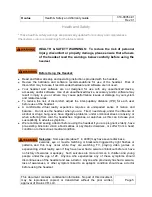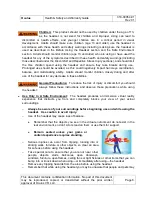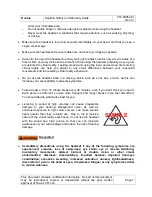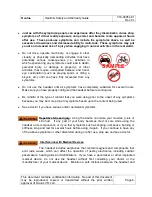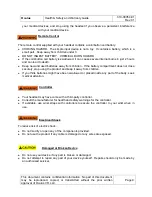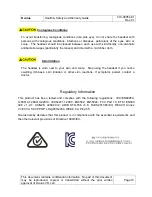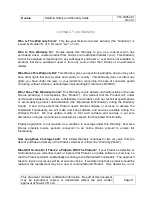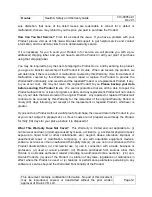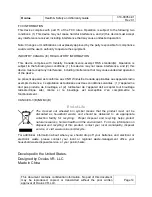
Oculus
Health & Safety and Warranty Guide
310-00054-01
Rev: 01
This document contains confidential information. No part of this document
may be reproduced, copied, or transmitted without the prior written
approval of Oculus VR, LLC.
Page 5
Health and Safety
* These health & safety warnings are periodically updated for accuracy and completeness.
Check
www.oculus.com/warnings
for the latest version.
HEALTH & SAFETY WARNINGS: To reduce the risk of personal
injury, discomfort or property damage, please ensure that all users
of the headset read the warnings below carefully before using the
headset.
Before Using the Headset:
●
Read and follow all setup and operating instructions provided with the headset.
●
Review the hardware and software recommendations for use of the headset. Risk of
discomfort may increase if recommended hardware and software are not used.
●
Your headset and software are not designed for use with any unauthorized device,
accessory and/or software. Use of an unauthorized device, accessory and/or software may
result in injury to you or others, may cause performance issues or damage to your system
and related services.
●
To reduce the risk of discomfort, adjust the inter-pupillary distance (IPD) for each user
before use of the headset.
●
A comfortable virtual reality experience requires an unimpaired sense of motion and
balance. Do not use the headset when you are: Tired; need sleep; under the influence of
alcohol or drugs; hung-over; have digestive problems; under emotional stress or anxiety; or
when suffering from cold, flu, headaches, migraines, or earaches, as this can increase your
susceptibility to adverse symptoms.
●
We recommend seeing a doctor before using the headset if you are pregnant, elderly, have
pre-existing binocular vision abnormalities or psychiatric disorders, or suffer from a heart
condition or other serious medical condition.
Seizures:
Some people (about 1 in 4000) may have severe dizziness,
seizures, eye or muscle twitching or blackouts triggered by light flashes or
patterns, and this may occur while they are watching TV, playing video games or
experiencing virtual reality, even if they have never had a seizure or blackout before or have
no history of seizures or epilepsy. Such seizures are more common in children and young
people under the age of 20. Anyone who experiences any of these symptoms should
discontinue use of the headset and see a doctor. Anyone who previously has had a seizure,
loss of awareness, or other symptom linked to an epileptic condition should see a doctor
before using the headset.



